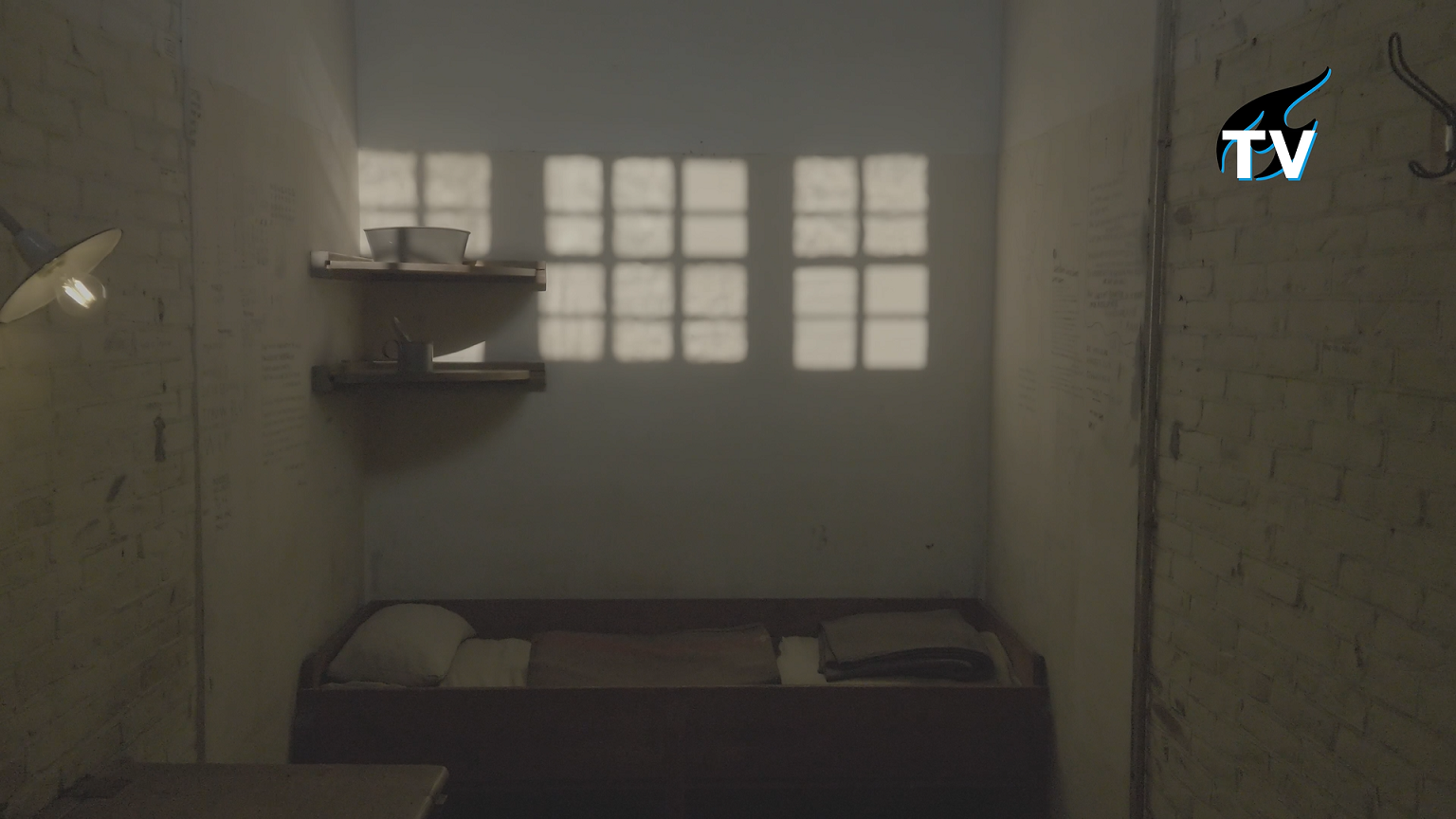This summer, TU Delft Mechanical Engineering students revealed one of the mysteries of the infamous Oranjehotel. TU Delft TV made a documentary about it.
Death row cell 601. (Photo: TU Delft TV)
The Oranjehotel (orange hotel) is a nickname for the prison in Scheveningen where more than 25,000 people were held during World War II. They were men, women and children from all walks of life – resistance fighters, Jews and black market dealers.
Most prisoners were sentenced to punishment in German camps or prisons. More than 250 of them were sentenced to death and were executed by firing squads on the Waalsdorpervlakte, an open space in the dunes between The Hague and Wassenaar.
Death row cell 601
The people sentenced to death awaited execution in the death row cells in D corridor. One of these cells, number 601, was kept intact after liberation. The writing on the walls, carved by prisoners over the years, is still visible. That is, except for one small piece of wall that was plastered over after the war. As collaborators such as NSB (National Socialist Movement that supported the Nazis, eds.) leader Anton Mussert were held prisoner in the Oranjehotel, suspicions quickly arose that the text under the plaster was written by NSB supporters.
This little piece of wall remained a mystery for a long time until a group of TU Delft students unravelled its secrets last summer. Under the supervision of Professor Joris Dik, a group of Mechanical Engineering students examined the wall. Rick van den Brink, Joost Wempe, Esmee Mooldijk, and Nienke Feirabend discovered a name and a series of words. The information revealed that the texts were written by Daniel de Blocq van Scheltinga, Mussert’s right hand.
- Watch the TU Delft TV documentary about the Oranjehotel.
Raking light photography
As the historic wall had to remain untouched, the students searched for techniques that would not damage the wall. “We narrowed it down to two techniques,” says Joost Wempe. “One was Raking light photography where you light the surface to see if there are any dips or peaks. The other was thermography where you warm the surface and watch how the warmth is absorbed by the wall.”
By merging the results of both techniques, the students could make much of the writing visible.
‘If you learn from history, you can do better today’
Wempe says that you can do a lot with these techniques. “There are hundreds of inscriptions by resistance heroes and NSB supporters in the original walls of the Oranjehotel. If you can see what they say, you can learn more about history. And if you learn from history, you can do better today.”
Do you have a question or comment about this article?
m.vanderveldt@tudelft.nl


Comments are closed.